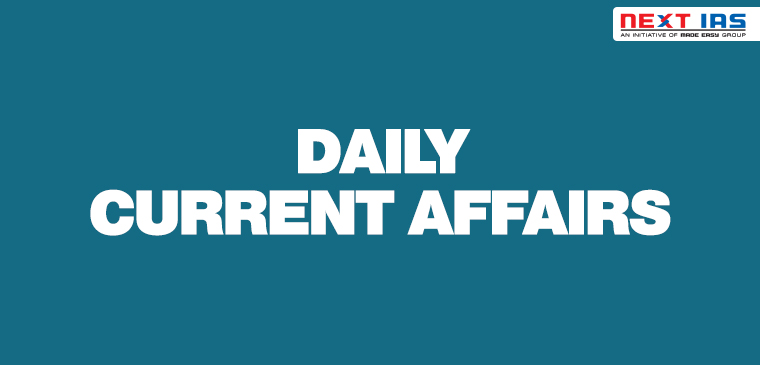
In News
Recently ,the Ministry of Chemicals and Fertilizers have taken several steps to ensure availability of fertilizers to farmers at subsidized prices.
Background
- In the last few months, the international prices of raw materials of Di-ammonium Phosphate (DAP and other Phosphatic & Potassic (P&K) fertilizers have increased sharply.
- Prices of finished DAP etc. have also increased proportionally in the international market.
- Despite this sharp increase, DAP prices in India were not increased by the companies till last month. However, some companies have now increased the DAP price.
Key Highlights Of Recent Steps
- Government of India is making available fertilizers, namely Urea and 22 grades of Phosphatic & Potassic (P&K) fertilizers including Di-ammonium Phosphate (DAP), Muriate of Potash (MOP)& Single Superphosphate (SSP) to farmers at subsidized prices through fertilizer manufacturers/ importers.
- The subsidy on P&K fertilizers is being governed by Nutrient Based Subsidy (NBS )Scheme w.e.f 01.04.2010.
- Under NBS, a fixed amount of subsidy decided on an annual basis is provided on each grade of subsidized Phosphatic and Potassic (P&K) fertilizers, except for Urea, based on the nutrient content present in them.
- The scheme is administered by the Department of Fertilizers under the Ministry of Chemicals & Fertilizers.
- The subsidy on P&K fertilizers is being governed by Nutrient Based Subsidy (NBS )Scheme w.e.f 01.04.2010.
Fertiliser Subsidy
- Farmers buy Urea fertilisers at MRPs (maximum retail price) below their normal supply-and-demand-based market rates or what it costs to produce/import them.
- The MRP of neem-coated urea, for instance, is fixed by the government at Rs 5,922.22 per tonne, whereas its average cost-plus price payable to domestic manufacturers and importers comes to around Rs 17,000 and Rs 23,000 per tonne, respectively.
- The difference, which varies according to plant-wise production cost and import price, is granted by the Centre as subsidy.
- The MRP of neem-coated urea, for instance, is fixed by the government at Rs 5,922.22 per tonne, whereas its average cost-plus price payable to domestic manufacturers and importers comes to around Rs 17,000 and Rs 23,000 per tonne, respectively.
- The MRPs of non-urea fertilisers are decontrolled or fixed by the companies.
- The Centre, however, pays a flat per-tonne subsidy on these nutrients to ensure they are priced at “reasonable levels”.
How Does The Fertiliser Subsidy Work?
- The subsidy goes to fertiliser companies, although its ultimate beneficiary is the farmer who pays MRPs less than the market-determined rates.
- From March 2018, a Direct benefit transfer (DBT) system was introduced, wherein subsidy payment to the companies would happen only after actual sales to farmers by retailers.
- Each retailer now has a point-of-sale (PoS) machine linked to the Department of Fertilisers’ e-Urvarak DBT portal.
- Anybody buying subsidised fertilisers is required to furnish his/her Aadhaar unique identity or Kisan Credit Card number.
- The quantities of the individual fertilisers purchased, along with the buyer’s name and biometric authentication, have to be captured on the PoS device.
- Only upon the sale getting registered on the e-Urvarak platform can a company claim subsidy, with these being processed on a weekly basis and payments remitted electronically to its bank account.
Rationale behind the introduction of DBT
- The main motive is to curb diversion.
- Being super-subsidised, urea is always prone to diversion for non-agricultural use — as a binder by plywood/particle board makers, cheap protein source by animal feed manufacturers or adulterant by milk vendors — apart from being smuggled to Nepal and Bangladesh.
- With DBT, pilferage happens only at the retailer level, as there is no subsidy payment till sales are made through POS machines and subject to the buyers’ biometric authentication.
Issues /Challenges With Fertiliser Subsidies
- At present, the Centre is following a “no denial” policy.
- Anybody, non-farmers included, can purchase any quantity of fertilisers through the PoS machines.
- It obviously allows for bulk buying by unintended beneficiaries, who are not genuine or deserving farmers.
- While there is a limit of 100 bags that an individual can purchase at one time, it does not stop anyone from buying any number of times.
Way Forward
- The time has come to seriously consider paying farmers a flat per-acre cash subsidy that they can use to purchase any fertiliser.
- The amount could vary, depending on the number of crops grown and whether the land is irrigated or not.
- This is, perhaps, the only sustainable solution to prevent diversion and also encourage judicious application of fertilisers, with the right nutrient (macro and micro) combination based on proper soil testing and crop-specific requirements.
- One plan under discussion is to cap the total number of subsidised fertiliser bags that any person can buy during an entire kharif or rabi cropping season.
- This, it is expected, would end even retail-level diversion and purchases by large buyers masquerading as farmers
Source :PIB
Previous article
India Resists Community Transmission
Next article
Iran’s Farzad-B Gas Field